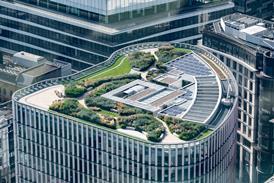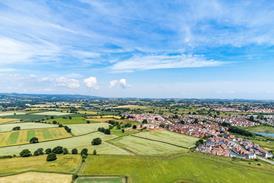In an interview with Building, he dismissed architect's fears that the move to design and build – most closely associated with the procurement of industrial sheds – amounted to a dumbing down of public procurement.
He said: "It is excessively pessimistic to suggest that design and build cannot produce good buildings. You only have to look at the Second Severn Crossing, or Foster and Partners' Chek Lap Kok Airport to see that that is not true.
He also suggested that architects would have a major part to play in the success of the new procurement systems. He said: "There is a wealth of world-class design talent in the UK. If architects engage in a more constructive relationship with the rest of the industry and clients, there is no reason why design and build cannot produce excellent results.
"Instead of taking a defensive stance over design integrity, architects must work with the rest of the industry to ensure that care and attention is factored into the process."
Howarth also played down any conflict between design and build and the remit of the Commission for Architecture and the Built Environment, which was set up to promote high-quality architecture.
Howarth said the CABE could have an impact on government practice, despite an annual budget of less than £1.5m, because it would be working with the grain. He said: "The government's record on building procurement has been patchy in the past. But there is a new commitment across the government to procuring better buildings with a longer life that are more fit for their purpose. That is why the CABE must attack us if we get it wrong".
CABE chairman Stuart Lipton had identified this as the commission's top priority. A meeting last Wednesday of the seven-strong implementation group, chaired for the first time by Lipton, agreed that the top four targets should be:
- government procurement
- education and public understanding
- the built environment and urban design
- support and encouragement for regional initiatives.
Yesterday, Lipton was due to address a seminar at 10 Downing Street on the CABE's remit of championing good design in public procurement. It was to be attended by senior officials from all major government departments.
A spokesman for the policy unit at No 10 said the seminar had been convened to discuss issues arising from the urban taskforce report, the advent of the CABE and the impending urban white paper. He said: "It is a sign of the rising interest in the whole field. There is a lot of new building work planned as part of many government programmes."
Howarth said he was talking to the DETR and other departments, such as the Department for Education and Employment, about ways in which they could help meet the CABE objectives.
He said minister for public health Tessa Jowell had recognised the importance of good design for the pre-school education and health centres planned in the Department of Health's £540m "Sure Start" strategy.
Howarth said the Royal Fine Art Commission, which the CABE will replace, had had a benign influence on the quality of new buildings across the UK ."We don't want to throw the baby out with the bath water," he said, hinting that a number of RFAC commissioners had been invited to become CABE commissioners.
Howarth said Lipton and the CABE commissioners would determine the operational and administrative structure of the body. He indicated that subcommittees responsible for roles such as design review and public procurement would be set up. Six of the 15 commission appointments will be made in mid-July, with a further batch in October.






















